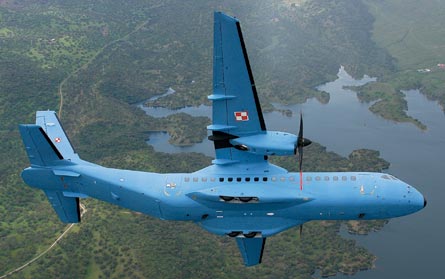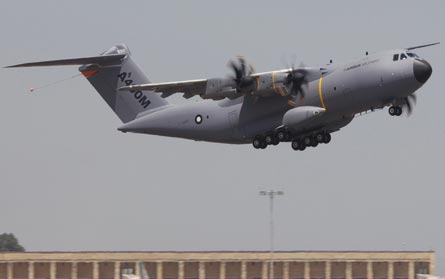There are two ways of looking at 2009's decision to wrap the A400M and the rest of EADS's Spanish military transport operation under Airbus control.
It put a niche small business and a struggling, highly ambitious programme into the hands of a manufacturing mega-player used to managing complex, multinational projects and marketing aircraft all over the world. Or, it reduced a one-proud national asset, EADS Casa - already diminished by its absorption into EADS Military Transport division nine years earlier - to the status of southern outpost of a Toulouse-run empire.
Domingo Ureña-Raso, the new chief executive of Airbus Military in Madrid, has no doubts that it was the former, and that the restructure has been successful. "We have passed through the turmoil and we can see now that the integration is done," he says.
|
|---|
|
DISPLEASURE
Raso acknowledges the decision was controversial in Spain. "This was the first time since 1923 that the Casa name has been taken away," he says. The displeasure extended to more than a change of name. "We [Airbus] were the big guys coming here to transfer work developed here since 1923 to France or Germany. We guaranteed that Airbus Military would retain in Spain their capabilities in the medium and light aircraft derivatives, as well as any derivative in future. As soon as we explained this, any misunderstandings disappeared."
For a country mired in economic problems, few deny that EADS has been good for Spain, whose aerospace champion was already part of the Airbus consortium and involved in partnerships such as Eurofighter before 2000. Spain's early push into composite technology has also stood it in good stead, with the country's Airbus facilities, mainly in and around Madrid, winning workshares in programmes well in excess of 5.5%, the stake in EADS held by Spanish state holding company SEPI.
The biggest breakthrough for the country's industry was arguably the decision to site the A400M final assembly line at Seville airport, next to Casa's factory responsible for its small and medium-size military transport range.
As the giant hangar and office complex took shape throughout the latter half of the decade, it appeared to symbolise Spain's ambitions as a modern aerospace economy, and was a huge fillip for the southern city. A suppliers' aerospace park - Aeropolis - emerged opposite attracting mainly small and medium-size manufacturers from Spain and overseas. But the A400M crisis threatened to turn the complex - which also has a new assembly hall for the smaller transporters - into a white elephant.
RESTRUCTURE
Until the restructure, Airbus Military and the A400M was a standalone business. The rest of EADS Casa was split between Airbus, Eurocopter and EADS's military transport division, which was responsible for Airbus transport and special mission conversions as well as the C-295 and CN-235 and whose chief executive was part of the main EADS management team.
It was an inelegant compromise designed to preserve the integrity of Casa and get the Spanish on board when EADS was created, but few even within EADS appeared to understand its legal and organisational status within the parent organisation.
Today, the reporting channels are cleaner, with Ureña-Raso directly responsible for the A400M and military transport business through Toulouse, and indirectly the rest of EADS's activities in Spain. Integration of the A400M into Airbus has led to a vast improvement in the management of the programme, which had been run at arms length from Toulouse with blurred lines of communication among the subassembly factories and the consortium responsible for the engine. "Integration has given us the opportunity to manage this problem as a single entity and aggregate our energies," says Ureña-Raso, a native of Toledo who previously worked in Toulouse, Poland and Munich for various EADS companies.
One trend he has noticed during his 10 years at EADS has been a move away from an obsession with "workshare" between different countries and towards "capabilities", with EADS more willing to allocate contracts to factories that can do the best job on a system or structure rather than according to traditional national allocations.
A more streamlined, less nationalistic structure and a flexible, mobile workforce is also helping. There are 600 people working in the Seville final assembly line from Airbus's commercial operations, for instance. "We have mixed teams like this everywhere in Europe. We are creating synergies by mixing the skills we have in the civil market where they produce 500 aircraft a year with those we have in developing special solutions, producing 20 aircraft," says Ureña-Raso. "These mixed teams, in engineering and flight-testing, mean we bring in new ideas. It's a win-win situation."
Source: Flight International

























